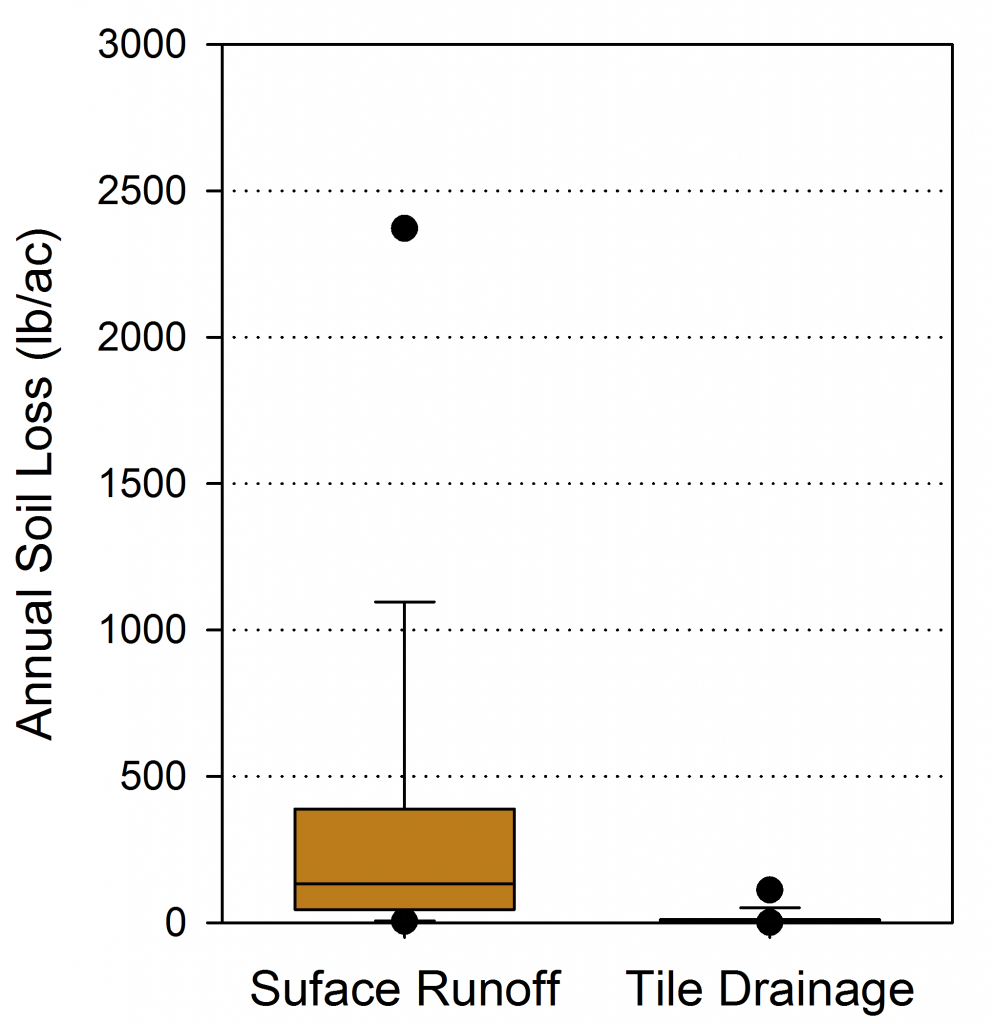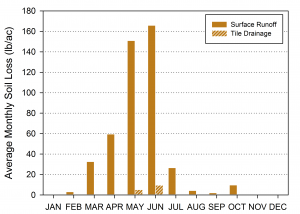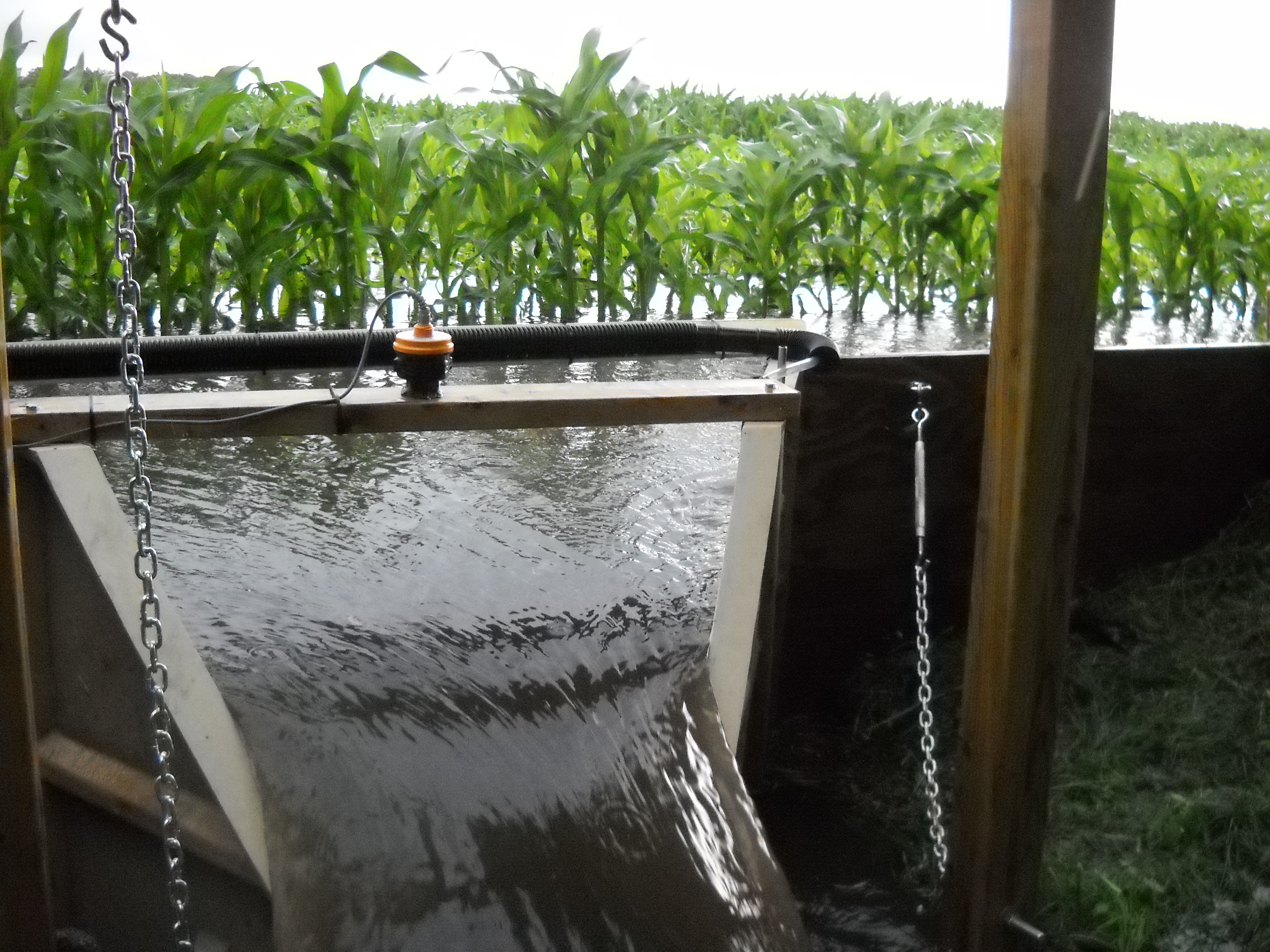Discovery Farms Programs in Minnesota and Wisconsin have collected edge-of-field water quality information from 25+ farms and 50+ fields starting in 2002. More than 100 site years of surface runoff data and 30 site years of tile drainage have been collected.
Surface runoff is a more significant driver of soil loss than tile drainage
- Median annual soil loss is 134 lb/ac
- This low value equates to about 3 five gallon pails full of soil from an area the size of a football field
- High annual soil losses suggest a need to re-evaluate tillage practices to match the landscape
- Fields with high soil losses stand out visually with sedimentation in low areas and rills running down hillsides
- Make sure to check fields annually for these signs and adjust practices if needed
Most soil loss occurs in May and June
- 69% of the soil loss occurs in May and June
- Fields are most vulnerable to soil loss from planting to crop canopy
- Too little soil cover and too much soil disturbance for the landscape are indicated by large soil losses in May and June
A small number of events cause the most soil loss
- There have been 1074 surface runoff events monitored by Discovery Farms
- 10% of the runoff events caused 85% of the total soil loss
- Nearly all of those runoff events were generated by very intense storm events
- The combination of intense storms and time periods where the landscape is most vulnerable, produces the most soil loss
Latest posts by Tim Radatz (see all)
- Lessons Learned from Schafer Farms – Implementing Conservation in a Rolling Landscape - April 8, 2020
- What happened to spring? - July 15, 2019
- Tile flow and nutrient movement in Northwest Minnesota - September 13, 2018


